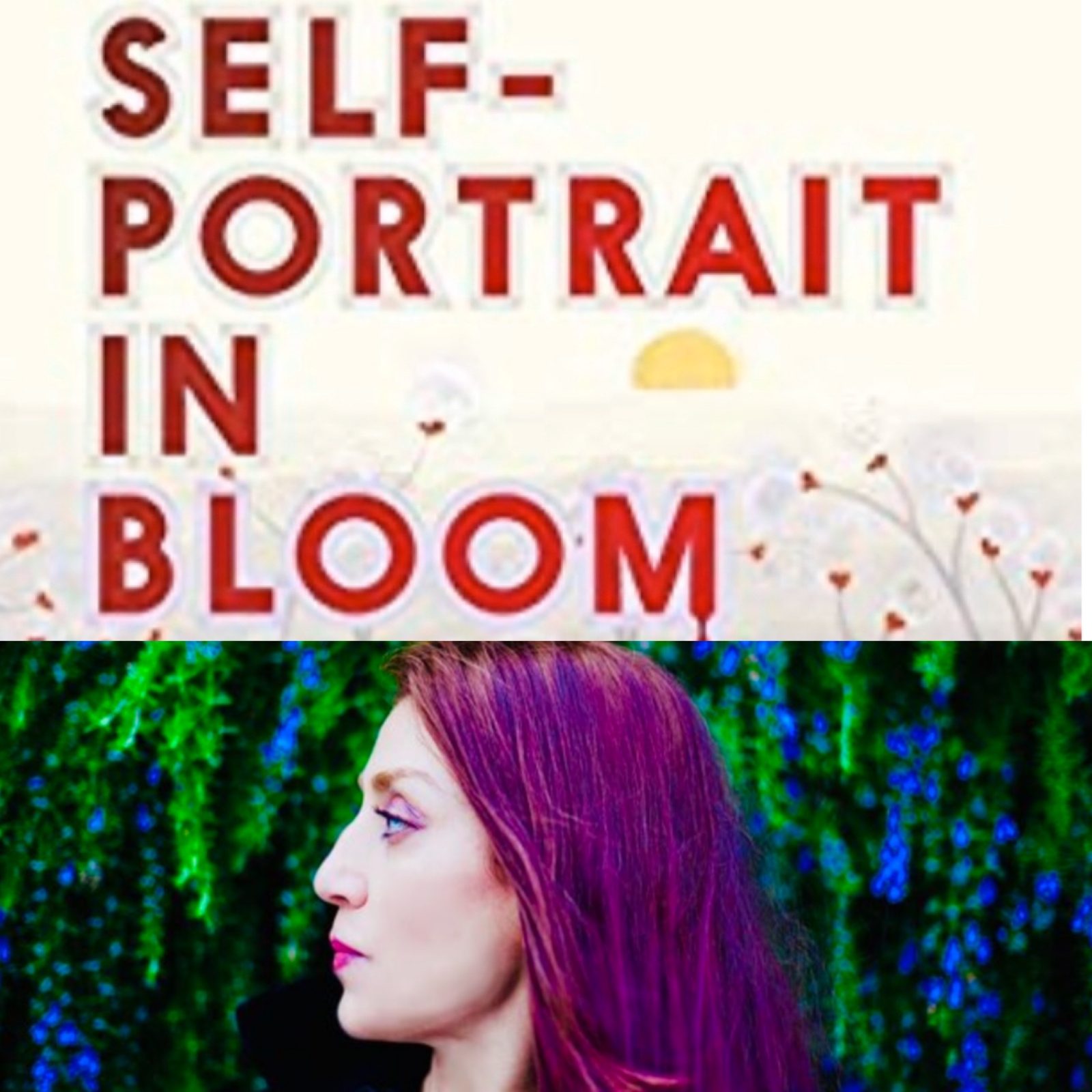
My country Iran has been in the U.S. news for decades. The American news whipsaws between long stretches where Iran is hardly mentioned and occasional bursts of “crisis.” Despite a millions-strong Iranian diaspora in the United States, the American media depicts Iran as the remote and terrifying “Middle East,” full of chanting, savage, vengeful mobs.
Take this example from CNN’s coverage of the killing of Qasem Soleimani. Or this headline, from Fox News.
These and other depictions conceal the nuances of who the Iranian people really are. And the manufactured ignorance feeds directly into aggression toward Iran. Examples from the news media are easy to point to, but there are other channels as well, where, wittingly or not, even members of the Iranian diaspora participate, that build and enforce walls between “Iran” and “The West.” These channels fly under the radar. So far under the radar, in fact, that it took me years to recognize them.
Enter Self-Portrait in Bloom (l’Aleph, 2019), a hybrid memoir by author, translator, and interdisciplinary artist Niloufar Talebi. Released in the 40th anniversary year of the Iranian revolution, Self-Portrait in Bloom merges autobiography, historical photography, and a biography of Ahmad Shamlou (1925-2000), a towering cultural figure and poet whose path crossed Talebi’s when she was a girl and later a young woman. Self-Portrait in Bloom includes a book-length selection of her brilliant, transparent translations of Shamlou’s works. As she puts it in the prologue:“There are two books in this book. One portrait of me and one of Ahmad Shamlou. And they intersect.” Indeed, the portraits do more than intersect—they become mirror images.
In Self-Portrait in Bloom Talebi treats nonfiction as a manicured garden where memoir, essay, commentary, scholarship, translation, and so much more coexist. She treats autobiography as a door to deeper reflection, not just introducing Shamlou to Western audiences who will not have heard of him before, but also interrogating the politics of translation that reflect and shape power relations between Iran and the United States. The less Western audiences know about Iran, the easier for politicians to cast it as a monolithic enemy. And the more the American public imagines Iran to be an enemy, the fewer chances for Iranian voices to get translated for U.S. readers. So hostility begets invisibility, which in turn begets more hostility. An American reader will see very few books about Iran by Iranians—though there’ll be plenty of appropriations of ancient classics of Persian literature that perpetuate Western assumptions about the mysterious East. So the books that will show Americans the vibrance of a living Iran are by diaspora writers writing in English.
It is worth noting that the damage doesn’t all come from the American side. The Iranian regime stokes hostility and division for its own purposes, compounding Iranians’ struggle for visibility and expression by shrouding women in imposed hejab, censoring and persecuting its own citizens and writers, and refraining from funding cultural exchanges, the bedrock of soft diplomacy and thriving cultures, something many European artists, for example, thoroughly enjoy. As I was reading Self-Portrait in Bloom, Talebi’s lived experience showed me how Western, Iranian, and as is revealed later in her book, some of the Iranian diaspora use opportunities to silence women and those trying to give voice to the voiceless. It left me wondering why more people were not cognizant and outspoken as Talebi is about the perfect storm of unfavorables that strangle Iranian voices on the world stage.
But back to Shamlou and Talebi. She was born in England and raised in Iran both before and after the 1979 Islamic revolution. As the child of an intellectual middle-class family, Talebi not only had access to the world’s literature at home, but also had the privilege of knowing some of Iran’s most prominent literary figures, including Shamlou. Her family—at great risk to themselves—hosted underground literary gatherings. Shamlou had a great effect on young Talebi. “I was eleven years old, […] when Shamlou brought the full force of his passions for literature, classical music, politics, and debating to our home.” Talebi absorbed every moment of those life-shaping meetings. Her family migrated to the U.S. during the 1980’s Iran-Iraq war, where she studied comparative literature in college, and later began translating Persian poetry to not only fill a chasm for herself, but to strike connections for her new countrymen. Her translations would go on to gain her recognition and translation awards.
Over several alternating chapters in Self-Portrait in Bloom, we see Talebi and Shamlou converge with each other. We get snapshots of Talebi’s own childhood and life, including several momentous encounters with Shamlou, and an overview of the origins and struggles of Shamlou’s life and his brave, new, literary revolution of modernizing Persian poetics. Shamlou ingested and incorporated into his work the aesthetic innovations of world cultures by translating dozens of writers, the likes of Langston Hughes, Lorca, Mayakovsky, and Baudelaire. Shamlou skillfully rode the razor’s edge of fiercely rooting himself in his culture, yet resisting nativism, of being global, yet defying Westernization. As if this was not enough rebellion, Shamlou tirelessly championed freedom and human rights and paid the high price of intermittent imprisonment throughout his life.
Talebi describes their shared journey in prose that often veers into the poetic, gifting her reader surprises and blank spaces of respite. “My ‘Shamlou’ has been a feeling, a phantom, a mystery. A genius of discipline, a committed warrior…He is the stories his widow told me about their lives. He is the cultural giant whose work I toil to read, the subject of my research, the author of words I translate and the worlds I discover.” In late 2012, this deep tie she felt to Shamlou, and his near-invisibility in the English language, prompted Talebi to take up the mission of introducing Shamlou to wider audiences, starting with a book and an opera inspired by Shamlou’s life and work.
She submitted early translations to a prestigious U.S. translation award and won. But things would take a devastating turn for Talebi.
The United States copyright law (see, for example, 17 U.S.C. § 104) doesn’t protect works by Iranian authors first published in Iran. This isn’t because of any literary hostility to the Islamic Republic, but because the United States only protects works tied to countries that have copyright treaty relationships with it. And Iran is one of the few countries left that do not. All of Shamlou’s works first published in Iran are not subject to United States copyright protection. They are in the public domain and free for anyone in the United States to copy, translate, and adapt. And many have and do.
Talebi understood this, but with a courtesy license in hand from Aida Shamlou, the poet’s widow and co-executor of Shamlou’s estate which is managed by the Alef Bamdad Institute, Talebi submitted her translations to said U.S. translation fellowship and won her 5th award in translation. But news of the award triggered a campaign of personal abuse and harassment from a member of the Iranian overseas diaspora and victim of the Islamic regime—whom Talebi, with admirable restraint, calls “Colleague”—claiming to act on behalf of the Alef Bamdad Institute with a letter claiming copyright.
The baseless assertion of copyright tied to works that are in the public domain led to the granting institution to circumvent any possible complications and drop the award and its sizable cash prize without ever officially revoking it, and left Talebi in excruciating limbo. This unexpected betrayal left Talebi devastated, ill, incapable of telling the story for a long time. She writes, “It was the mostalonest I ever felt in the world. My pen also froze. You shattered my sense of self.” But with time, she came to see the event in the much broader scope of translation and power, vilification and invisibility.
Having not too long ago emigrated from Iran, I recognize the silencing and shaming that Talebi endured and dared to write about as the expression of a misogyny that still exists within literary circles in Iran, sadly extending even to female artists abroad. Talebi’s translations of Shamlou’s poems soar with poetic subtlety, transcend the few available well-intentioned but clumsy academic renditions. What did “Colleague” gain by this cruelty?
Each painstakingly achieved triumph by Iranian artists who sacrifice to create without state resources should be championed. Stripping a translator from a competitive fellowship, a boon for her and Iranian literature, only hurts an already persecuted people who long for freedom, for taking part in a camaraderie of cultures. The actions of such silencing agents as “Colleague” only help further widen the separation of nations that advance agendas of empire.
In the coda of Self-Portrait in Bloom, a joyful incantation, we who have journeyed with Talebi through her trial by fire, finally see the end: a spirit that overcame, knitting back together the fragments of her life. She realized her Shamlou book—I’ve held it in my hands, and so should you—and her opera, called Abraham in Flames after one of Shamlou’s book of poems. And she paints for us, in a thousand shades of gray, what it is to be an anguished, female, emigrant, artist who sacrifices everything for her vision, refusing to abandon or compromise her Iran, the one that lives in her and lived in Shamlou.
Nazli Artemia is originally from Iran and immigrated to the United States more than a decade ago. She holds an MFA in creative writing and has worked as a fiction editor and Persian translator with several local magazines in the United States. Her fiction has appeared in WLA (War, Literature, and the Arts) journal, and in an anthology named The Third Script. Her recent fiction is under publication by Tint journal. She is currently working on her first novella.







